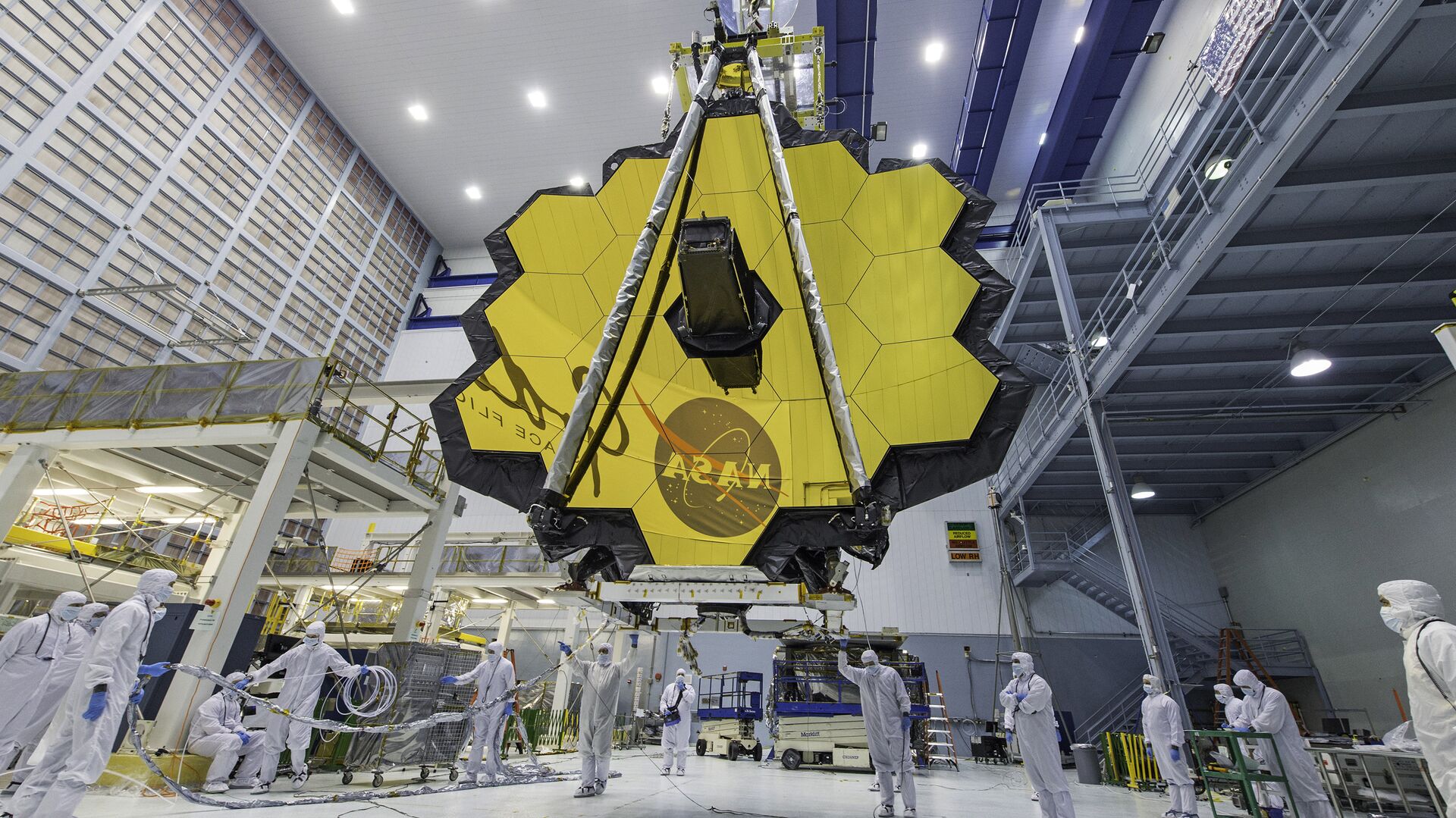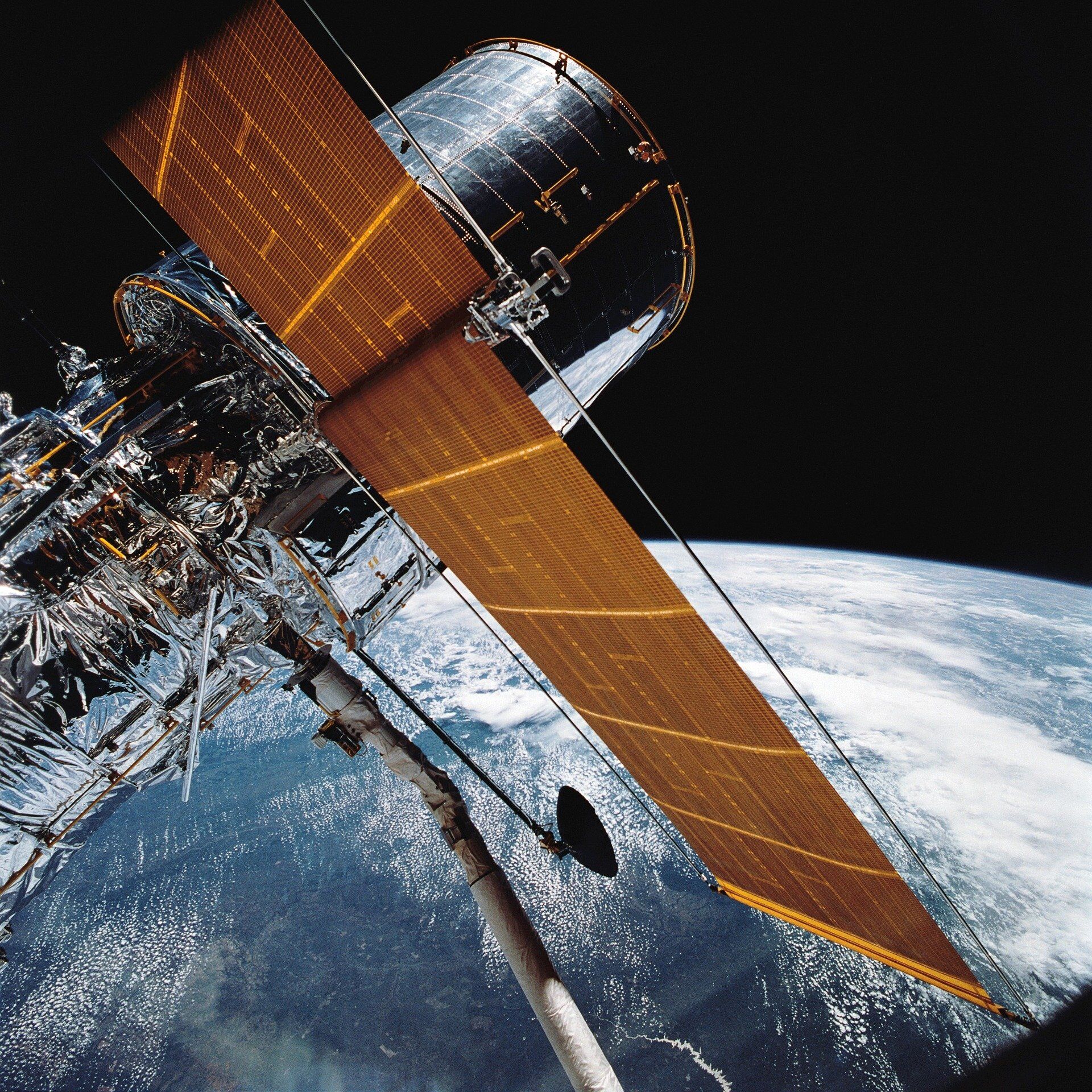Launch of James Webb Telescope Hailed as ‘Game-Changer’ in Search For Alien Life
11:24 GMT 25.12.2021 (Updated: 10:42 GMT 21.04.2023)

© AP Photo / Laura Betz/NASA
Subscribe
The long-awaited launch by the National Aeronautics and Space Administration (NASA) of the James Webb Space Telescope – the most powerful science observatory ever built for space – as a successor to the Hubble Space Telescope, in orbit since 1990, has been touted as opening up “an entirely new perspective on the universe”.
The world's most powerful new telescope is about to usher in a “new era of astronomy”, according to experts.
The $10 billion infrared James Webb telescope (JWST), produced by NASA in collaboration with the European and Canadian space agencies, has been hailed as about to transform our understanding of the universe by offering a glimpse of its dawn existence, when the first galaxies are believed to have formed just 100 million years after the Big Bang.
UPDATE: @NASA, @ESA, and @Arianespace have confirmed a targeted launch date of Dec. 25 at 7:20 am ET (12:20 UTC) for the James Webb Space Telescope. The @Ariane5 rocket is set to roll out to the launchpad on Dec. 23: https://t.co/O9R4KRlfQW pic.twitter.com/VbNKWs48je
— NASA Webb Telescope (@NASAWebb) December 22, 2021
Compared to the Hubble Space Telescope, in orbit since 1990, the space observatory will provide “an entirely new perspective on the universe that will be just as awe-inspiring,” said Nikole Lewis, deputy director of Cornell University’s Carl Sagan Institute.
Hubble can only “see back” to about 400 million years after the universe-forming Big Bang, while its successor will hopefully be able to look back 13.7 billion years.
Webb will offer astronomers a chance to study super-massive black holes believed to occupy the centers of distant galaxies, shedding light on the mysteries of dark matter and hunt for alien worlds by picking up on possible hints of life, such as water as its cameras study the atmospheres of planets.
Professor Martin Barstow, one of the scientists involved in developing the telescope, acknowledged that the telescope, which is about 100 times more sensitive than Hubble, could help seek out extra-terrestrial life forms.
"We will learn about the origins of the universe and how life came about and possibly, although we can't guarantee, about other life in our galaxy as well," he said.
While Hubble operated predominantly at optical and ultraviolet wavelengths, Webb will be able to peer in the infrared spectrum, observing objects at greater distances.
After its launch from French Guiana aboard a European Ariane rocket, the Webb telescope will spend a month reaching its destination in solar orbit while its orbital path keeps it aligned with the Earth and its trajectory around the sun. After about six months of calibration of its instruments, the telescope's operation will be managed from the Space Telescope Science Institute in Baltimore.
“We’ve been waiting a long time for this. Webb will move our search for life forward, but to find signs of life we have to be incredibly lucky,” said astrophysicist and planetary scientist at Massachusetts Institute of Technology (MIT), Sara Seager. At least five to 10 years of observing are planned.
Ori Fox, a scientist at the Space Telescope Science Institute in Baltimore, agreed, adding, “Personally, I think that even with all of the hype, the Webb will still exceed expectations.”
In the course of its first year of operation, JWST is scheduled to observe the TRAPPIST-1 system, located 39 light-years away. The area has been singled out by scientists as hosting seven Earth-size, rocky planets, at least three of which lie in the so-called “habitable” zone of the star. As this system of worlds has the potential for water on their surface, this field excitement that future studies of the unique planetary system could reveal conditions suitable for life.
The launch of the James Webb telescope was hailed as a “game-changer” in the search for life beyond Earth as it studies “in unprecedented detail” the atmospheres of thousands of extra-solar planets, Claudia Maraston, a professor of astrophysics with the Institute of Cosmology and Gravitation at the University of Portsmouth in the UK, was cited by Newsweek as saying.




